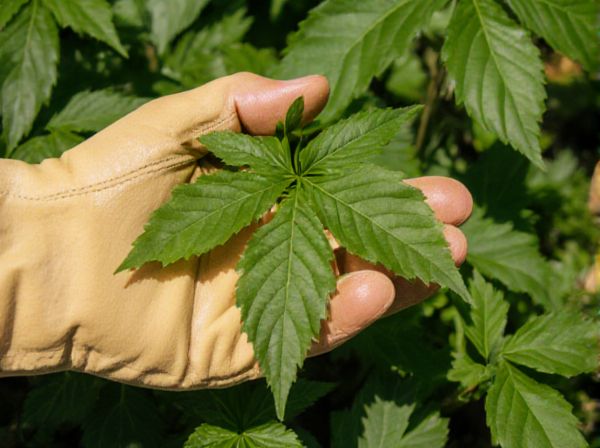
Broadleaf Weed vs Grass Weed Illustration
Broadleaf weeds have wide, flat leaves with a network of veins and often produce flowers, making them easily distinguishable from grass weeds, which have narrow, blade-like leaves with parallel veins. Grass weeds typically grow in dense clumps resembling turfgrass, whereas broadleaf weeds spread through creeping stems and are found scattered throughout lawns and gardens. Effective weed control requires identifying the specific type, as herbicides and treatments vary significantly between broadleaf and grass weeds.
Table of Comparison
| Feature | Broadleaf Weed | Grass Weed |
|---|---|---|
| Leaf Shape | Wide, flat leaves with distinct veins | Narrow, blade-like leaves with parallel veins |
| Growth Pattern | Spreads through seeds and root systems | Spreads quickly via runners and seeds |
| Root Type | Taproot or fibrous roots | Fibrous, shallow roots |
| Examples | Dandelion, Clover, Plantain | Crabgrass, Foxtail, Bermudagrass |
| Control Methods | Selective broadleaf herbicides | Grass-specific herbicides and cultural control |
| Impact on Lawns | Disrupts turf uniformity, visible broad leaves | Competes aggressively for nutrients and space |
Understanding Broadleaf Weeds vs Grass Weeds
Broadleaf weeds, characterized by their wide leaves and net-like veins, differ significantly from grass weeds, which have narrow leaves with parallel veins and hollow stems. Identifying these weed types is crucial for effective weed management and selecting appropriate herbicides, as broadleaf weeds are dicots and grass weeds are monocots. Understanding the growth patterns and root structures of broadleaf versus grass weeds enables targeted treatment to protect turfgrass and agricultural crops.
Key Identification Features of Broadleaf and Grass Weeds
Broadleaf weeds typically have wide, flat leaves with net-like veins and are often characterized by distinct flowers or seed heads, while grass weeds possess narrow, blade-like leaves with parallel veins and grow in clumps or tufts similar to lawn grasses. Key identification features of broadleaf weeds include the presence of broad, lobed leaves and taproot systems, whereas grass weeds exhibit fibrous root systems and jointed stems. Recognizing these morphological differences aids in effective weed management and targeted herbicide application.
Common Types of Broadleaf Weeds in Gardens
Common types of broadleaf weeds in gardens include dandelions, clover, chickweed, and plantain, each distinguished by their wide leaves and prominent veins. These weeds compete aggressively with garden plants for nutrients, water, and sunlight, often spreading rapidly through seeds or root systems. Effective control methods involve manual removal, targeted herbicides, and maintaining healthy lawn practices to prevent their establishment.
Common Types of Grass Weeds in Lawns
Common types of grass weeds in lawns include crabgrass, quackgrass, and nimblewill, each exhibiting aggressive growth that disrupts desirable turfgrass. Crabgrass thrives in warm-season lawns, producing wide, coarse blades, while quackgrass spreads through extensive rhizomes, making control difficult. Nimblewill invades shaded, moist areas, creating thin, weak patches that compete with healthy grass for nutrients and water.
Growth Habits: Broadleaf vs Grass Weeds
Broadleaf weeds exhibit broad, flat leaves with net-like veins and often grow from a single taproot, enabling deep soil nutrient access. Grass weeds have narrow, blade-like leaves with parallel veins and typically develop fibrous root systems that spread horizontally, competing aggressively with turfgrass. Understanding these distinct growth habits is crucial for effective weed management and targeted herbicide application.
Effective Control Methods for Broadleaf Weeds
Effective control methods for broadleaf weeds include the use of selective herbicides that target broadleaf species without damaging grass lawns, such as 2,4-D, dicamba, and MCPA formulations. Mechanical methods like hand-pulling and mulching can reduce broadleaf weed populations by disrupting their growth cycles. Maintaining dense turf through proper fertilization, mowing, and irrigation practices also helps outcompete broadleaf weeds and prevent their establishment.
Targeted Solutions for Grass Weed Management
Effective grass weed management requires targeted solutions that focus on the specific biology and growth habits of grass weeds compared to broadleaf weeds. Selective herbicides such as quinclorac, sethoxydim, or fenoxaprop are optimized for controlling grass weeds without harming broadleaf plants, ensuring precise weed control in turfgrass or cereal crops. Integrating cultural practices like proper mowing height, overseeding, and soil fertility management enhances the efficacy of these herbicides by promoting healthy grass growth and reducing grass weed infestations.
Preventing Broadleaf and Grass Weeds in Your Garden
Effective prevention of broadleaf and grass weeds in your garden begins with maintaining healthy soil through regular mulching and proper fertilization to create an environment resistant to weed growth. Applying pre-emergent herbicides specifically formulated for broadleaf and grassy weed species reduces seed germination and minimizes competition with garden plants. Regular lawn mowing at the recommended height for your grass type encourages thick turf, which naturally suppresses the establishment of both broadleaf and grass weeds by limiting sunlight exposure to weed seedlings.
Herbicide Choices: Selective vs Non-Selective Options
Selective herbicides target broadleaf weeds without harming grass species, making them ideal for lawns and turf management. Non-selective herbicides, such as glyphosate, eliminate all plant types, providing an effective solution for total vegetation control in areas like driveways or garden beds. Choosing the right herbicide depends on the weed type and desired plant preservation.
Seasonal Strategies for Weed Control
Broadleaf weeds such as dandelions and clover typically thrive in cooler seasons, making pre-emergent herbicides most effective when applied in early spring or fall. Grass weeds, including crabgrass and foxtail, often proliferate during warm seasons, requiring summer-targeted post-emergent treatments for optimal control. Seasonal strategies tailored to the specific growth cycles of broadleaf and grass weeds ensure efficient and sustainable lawn and garden maintenance.
Broadleaf Weed vs Grass Weed Infographic

 gardendif.com
gardendif.com